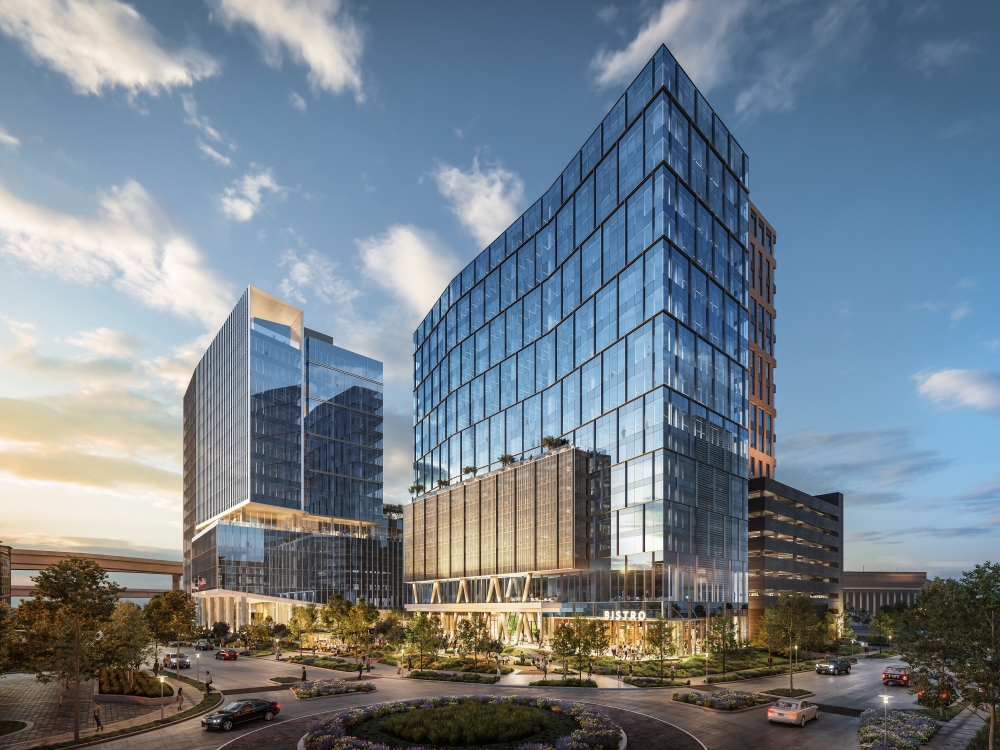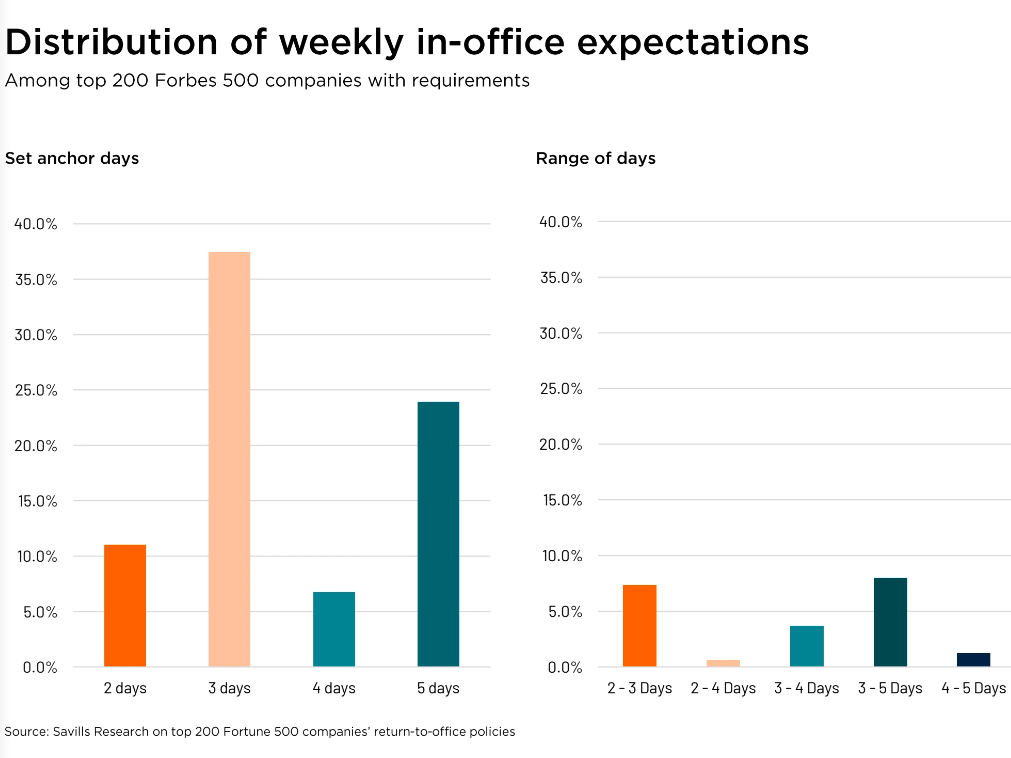Coworking Taps Suburban Potential: Q&A
Office Evolution’s Andrea Pirrotti-Dranchak talks about the light at the end of the COVID-19 tunnel and the key to staying operational during the pandemic.

Andrea Pirrotti-Dranchak, Chief Marketing & Development Officer, Office Evolution. Image courtesy of Office Evolution
The coronavirus urged coworking companies to look for alternative ways of operating their spaces. Some got more creative while others pandemic-proofed their locations and halted expansion plans. Meanwhile, companies such as Colorado-based Office Evolution kept diving through economic uncertainty while keeping its doors open, at the same time gearing up for growth.
The company looked beyond urban borders and branched out its network to the suburbs. Today, businesses are looking to move workers to smaller, suburban locations during the pandemic and Office Evolution’s workspaces are at the perfect intersection of what employers want and employees need. Andrea Pirrotti-Dranchak, the company’s chief marketing and development officer, discusses the shift away from urban centers to smaller markets and the changes she observed in the sector following the COVID-19 storm.
READ ALSO: Coworking Spaces Show Resilience During COVID-19 Crisis
The flexible space sector has been diversifying at a fast pace, with large landlords already creating their take on coworking. How can traditional coworking space providers stay on top in an increasingly competitive sector?
Pirrotti-Dranchak: The traditional landlord model remains incredibly relevant. Historically, however, this model is too laden with a legacy approach to facilities and has not been able to offer the holistic solution businesses of all sizes need.
Since the start of the pandemic, we have galvanized our community in an effort to help our members maximize productivity whether inside or outside the office, we installed touchless entry and our updated build-outs provide more individuals access to cost-effective private offices. Moreover, our COVID-19 sanitary protocols are helping preserve the health and well-being of our members.
What makes Office Evolution stand out from other coworking space providers?
Pirrotti-Dranchak: Our suburban network enables our members to live and work in the same community. Our workspaces are typically located on the buildings’ lower floors, so they can take the stairs rather than having to ride elevators to their office. Our floorplans are small, so everyone knows each other and are bonded by a desire to help one another. Each location is locally owned and operated, layering on a sense of accountability.
You’ve recently entered the Florida market, where the coworking sector has been gaining momentum. How do you identify new locations for your brand?
Pirrotti-Dranchak: We look for markets that are seeing growth in their communities. In these growing markets, there is a higher demand for safe and affordable workspace, as small businesses and solopreneurs are looking for ways to help their businesses grow and prosper.
This year, Office Evolution is looking to expand in suburban locations. Tell us more about this new direction and the drivers behind it.
Pirrotti-Dranchak: Businesses have shifted their attention to the suburbs for finding workspace. Not only is this more convenient for workers, but it is also more affordable for employers, as coworking provides them with the option to only pay for what they need. This is a huge growth opportunity for Office Evolution because we already have the suburban infrastructure in place to handle this increasing demand for more suburban coworking space.
 Technology is also fueling suburban growth. With the ability to collaborate with colleagues and customers via Zoom there is no reason for people to spend an hour or more commuting from the suburbs into the city.
Technology is also fueling suburban growth. With the ability to collaborate with colleagues and customers via Zoom there is no reason for people to spend an hour or more commuting from the suburbs into the city.
How do you think the coworking sector has changed since Office Evolution has been around and how do you see it going forward?
Pirrotti-Dranchak: In addition to health and safety, connection and community will be more important than they have been before. People want to be a part of something positive where they can find inspiration, innovation and energy.
Since we entered the sector 17 years ago, the coworking industry has changed dramatically. When it started, coworking was always thought of as a large room with shared workspaces. Over the years, the picture has shifted, focusing more on individualization, specific business needs and comfort. The industry began to realize that by offering individual, comfortable workstations and private offices, workers were more productive.
In addition to this shift, the number of employers who started considering coworking as a viable alternative to traditional office space grew drastically. Employers realized they don’t need to get wrapped up in expensive year-long leases. They are understanding that with coworking, they pay for the space they need and can also easily scale up or down. This has become a major factor during the pandemic, as many businesses have been forced to work remotely for the first time.
READ ALSO: CPE’s Coronavirus Coverage
What’s your take on the COVID-19 pandemic’s effects on the shared space sector?
Pirrotti-Dranchak: Change usually happens slowly, but the pandemic forced the sector to adapt quickly and that will help the shared workspace sector. As mentioned, many businesses are looking for ways to save money and a major cost for most businesses is real estate. Demand will build where employees dictate. The shift away from dense city centers is pointing to a move to the suburbs.
 The company hasn’t closed down during the pandemic. How did you manage to stay operational?
The company hasn’t closed down during the pandemic. How did you manage to stay operational?
Pirrotti-Dranchak: All Office Evolution business centers are CMRA certified. This allows our members to get their business mail delivered to our locations. This certification helped us qualify as an essential business, which allowed us to stay open and continue providing solopreneurs and small business owners with a safe environment to keep getting work done.
Additionally, our members needed access to our business centers in order to operate their businesses. With member safety top-of-mind, our centers have taken numerous precautions and are following CDC guidelines, including social distancing throughout the office, requiring members to wear masks, temperature checks, etc. Our touchless entry provides the technology that allows members to check in using their mobile device or tablet, as opposed to having to check in with the center manager or use a kiosk.
Tell us about the post-pandemic challenges in the coworking sector.
Pirrotti-Dranchak: I think the main challenge the industry will face is making people feel safe and comfortable in their return to the office. COVID-19 has forced us to shift how we go about our daily lives and it has altered the way people view things as simple as going to work. When people begin to return to their offices, they are going to want to know what their employers, office managers and landlords are doing in order to keep their workspace safe and clean.







You must be logged in to post a comment.